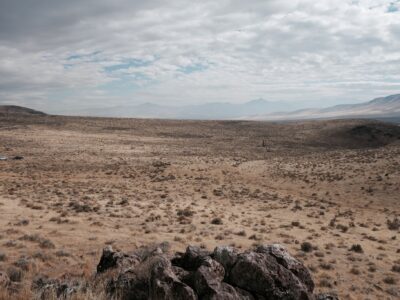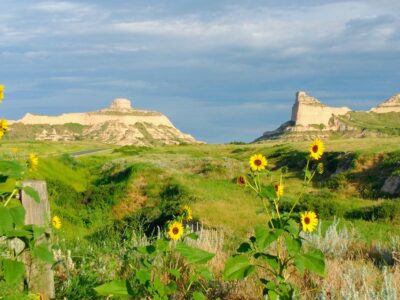It was a rainy April day when The Business Download headed to The Darcy Hotel in Washington, D.C.’s DuPont Circle neighborhood for the once-in-a-lifetime opportunity to meet a bald eagle. Our content producer met Clark, a 22-year-old bald eagle, and his trainer, Daniel Cone. Clark is a resident of the World Bird Sanctuary in St. Louis County, Missouri.
You may recognize Clark from your favorite pro sports event. He has done several flyovers during the national anthem and other national events.
Clark is the offspring of Carol and Captain, two eagles gifted to the country during the Reagan Administration in 1982. West Germany shipped the birds when they were eaglets, violating federal law — the 1940 Bald and Golden Eagle Protection Act prohibited foreign eagle imports. The Department of the Interior made an exception for the two parents because Carol and Captain were babies, not fully grown eagles. Solicitor William H. Coldiron said the Protection Act didn’t apply to the federal government, although this was later seen as a reinterpretation of the law.
Clark was born in captivity when bald eagles were endangered. Many were later successfully released into the wild. Unfortunately, Clark is the only one of his siblings who has not returned to the wild. He was born with a deformity in his feet, meaning he couldn’t survive extreme cold. Thus, he has lived his whole life in the Sanctuary, where he is now a member of the Eagle Flight Team, joined by his counterpart, Lewis. The raptors are named after Lewis and Clark, the famed American explorers.
Photo Courtesy World Bird Sanctuary
The Sanctuary has been great for Clark. Cone told us he is living his best life in the St. Louis area.
“He lives a very spoiled life,” he joked during an interview at Clark’s media availability. “He’s got expert care, free health care, and free food. We do treat him as an athlete. We want him to be able to stretch his wings and fly. We fly him every single day, so he gets plenty of exercise and mental stimulation.”
Clark has flown over Busch Field, home of the St. Louis Cardinals, the Chicago Bears’ Soldier Field, made appearances at The Horatio Alger Association, and many others. He, Cone, and other World Bird Sanctuary employees were in D.C. for a Horatio Alger Association awards ceremony.
Clark became internet famous in 2022 when he was pictured going through TSA security at the Charlotte Airport.
With a wingspan of just over six feet and a height of 30 inches, he is not the easiest animal to transport. The eagle showed off his wings to security, and once on the plane, he sat in the main cabin.
World Bird Sanctuary praised Southwest Airlines for allowing small animals in the cabin. Other airlines would’ve forced Clark to stay under the plane, which NPR reported he hates. The Sanctuary told NPR one airline misplaced Clark on one occasion.
Clark even gets his own hotel room when they travel. A perch is typically set up by the TV, and he loves watching nature shows and cartoons. His favorite food is salmon, but he doesn’t shy away from other meats.
Photo Courtesy Jameson Scarsella
Seeing an eagle up close is a cool experience. They are intimidating but majestic, especially when they try to take flight.
Thankfully, Clark did not fly around The Darcy’s lobby, but he did pose and look curious as reporters and guests flocked toward him. Cone and Clark did a few interviews with The Washington Post and The Business Download. The Sanctuary team stayed in D.C. until Saturday, April 5.
We often joke about how Benjamin Franklin was outvoted for choosing the wild turkey as the national mascot. However, The Franklin Institute says that was a myth. In a letter, Franklin compared the eagle in the original great seal design to a turkey, but this story is often taken out of context.
It’s thrilling to see our national mascot in real life. Clark is an example of the care the U.S. has shown for eagles — as of today, bald eagles are no longer endangered. According to a 2021 U.S. Fish and Wildlife Service report, the population has boomed to nearly 317,000 birds hatched since 1963 — when there were only 417 left in the U.S.
The birds have returned to areas like the Hudson River Valley in New York, New Jersey’s wetlands, a continued presence in the Mountain West, and other states in the Lower 48. And, Alaska has one of the highest concentrations of eagles in North America.





